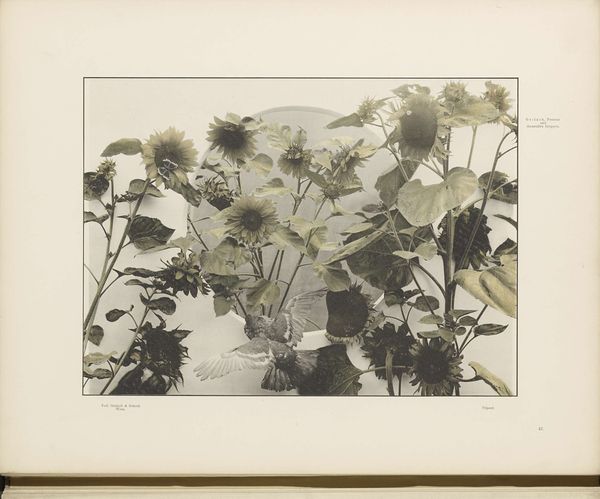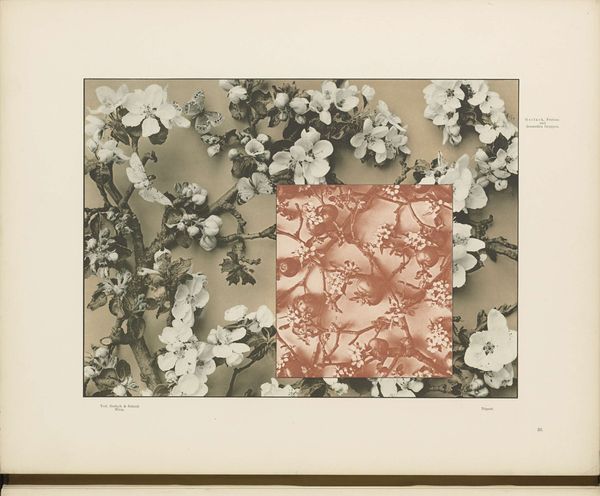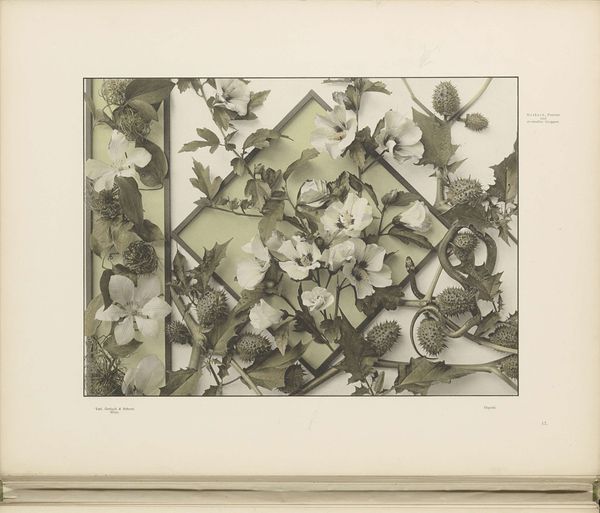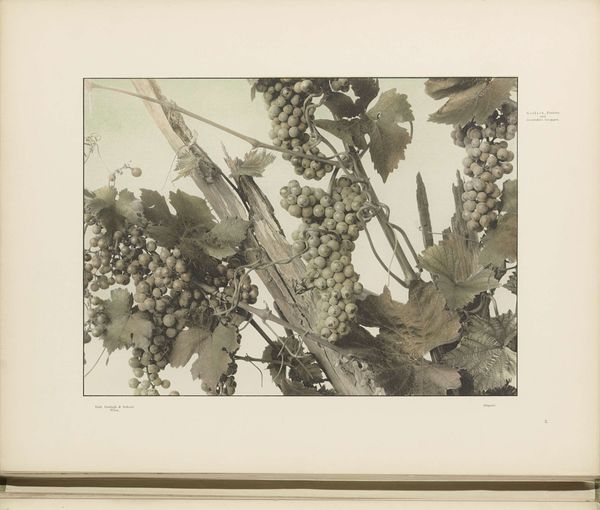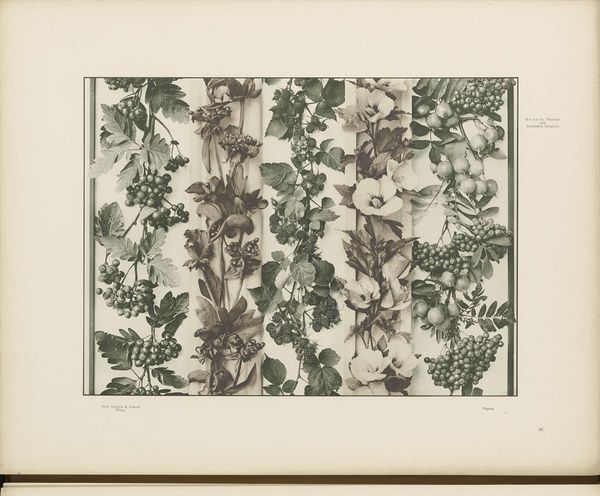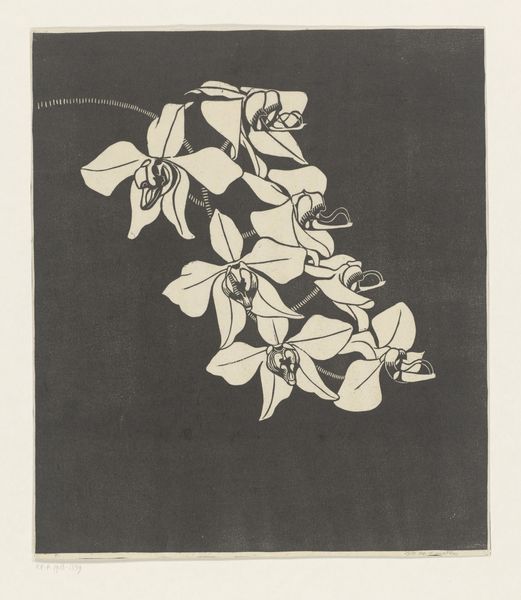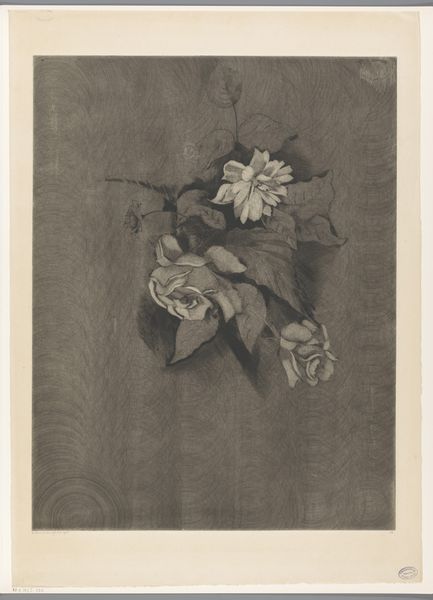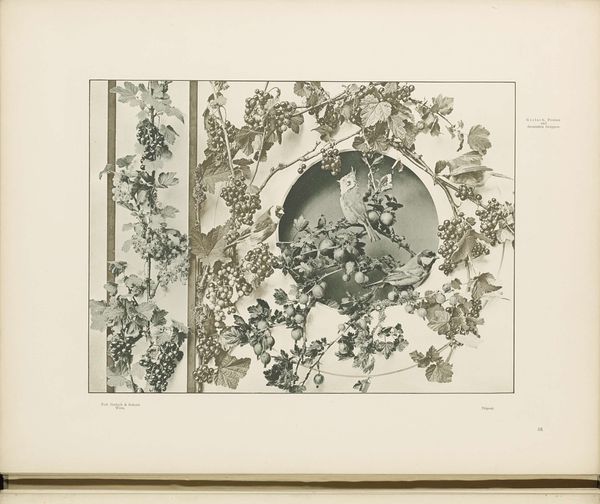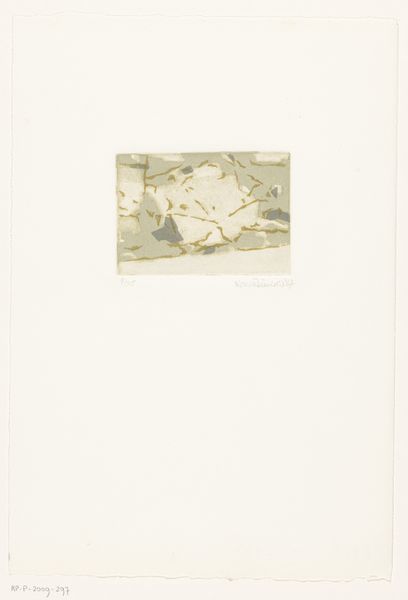
print, photography
# print
#
photography
#
watercolour illustration
#
watercolor
Dimensions: height 320 mm, width 405 mm
Copyright: Rijks Museum: Open Domain
Editor: This print, titled "Twee decoratieve groepen met rozen, varens en een parkiet," dating to before 1897, depicts two floral arrangements. They’re quite lovely, almost like Victorian botanical studies, but the muted colors give them a slightly melancholic feel. What sort of symbolism do you think we can find here? Curator: I see a delicate dance between life and ephemerality. Roses, universally symbols of love and beauty, are juxtaposed with the transient nature implied by the inclusion of the parkiet—a symbol, often, of the soul. How does that bird seem to you, situated amidst those roses? Editor: I see the bird as representing freedom or perhaps a fleeting thought. It feels very deliberately placed in the left arrangement. Is it usual to have a bird in the middle of an arrangement of flowers in Japonisme works? Curator: Interestingly, yes. The bird is central, commanding, it embodies aspiration. The composition calls on traditions, yet introduces naturalistic elements—like those specific varietals of roses. We must ask ourselves what feelings those elements carry into a tradition heavily informed by symbolism. The flowers become grounded, localized in the here and now, but what’s the result? Editor: It creates this really compelling tension. On the one hand, these are ideals, but at the same time, real, tangible objects. Curator: Exactly! It seems the intention is less about capturing simple beauty, and more about finding an artistic device that stirs both heart and mind in ways older art has not yet charted. What have you learned that has resonated with you most today? Editor: Definitely that images aren’t just pretty things, but storehouses of meaning we can interpret with sensitivity and with historical knowledge, but still always with new questions, too.
Comments
No comments
Be the first to comment and join the conversation on the ultimate creative platform.
